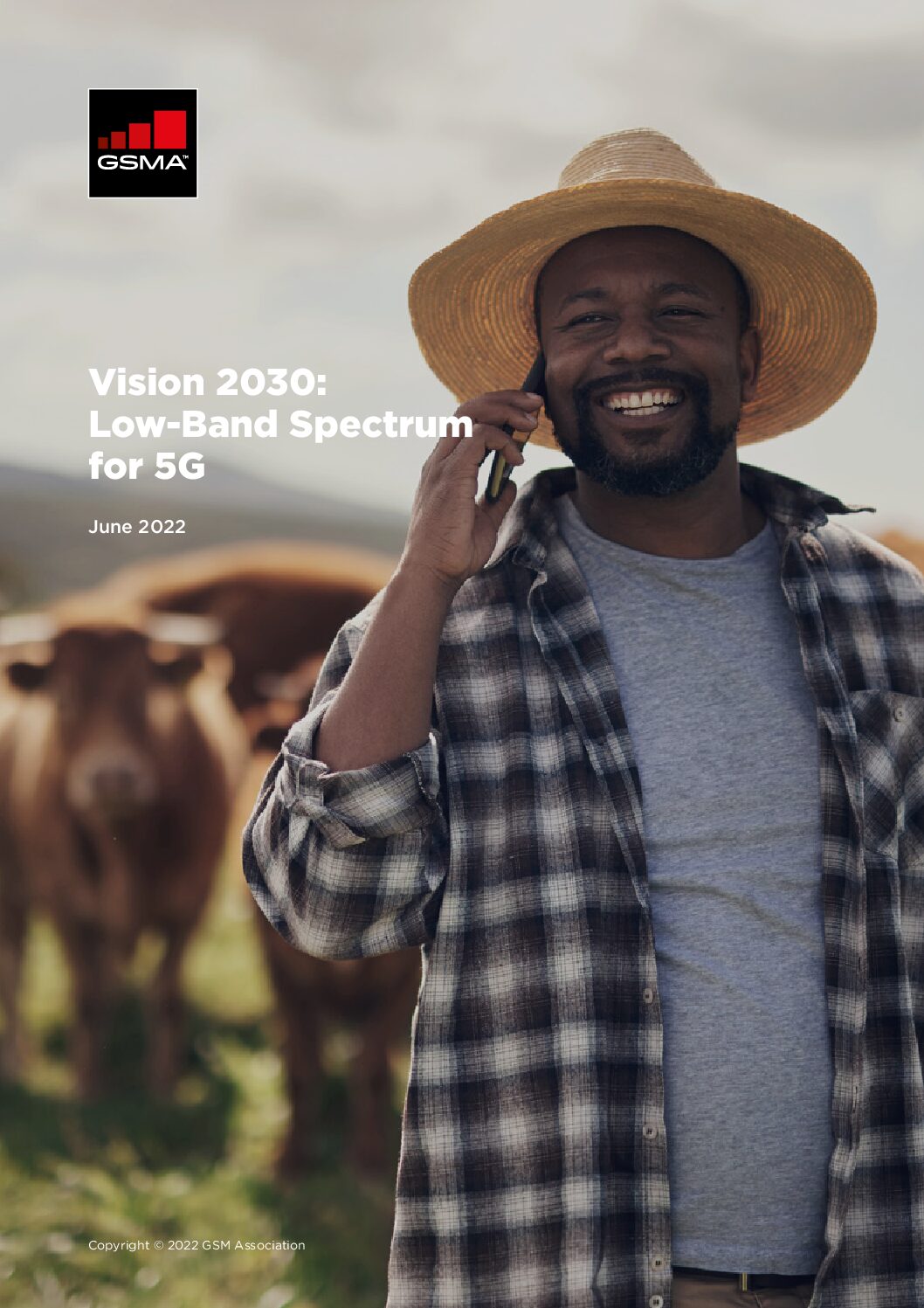Vision 2030: Low Band Spectrum for 5G
In this report, written for the GSMA, Coleago explores why low band spectrum is the cornerstone of digital equality and affordable connectivity to ensure that mobile’s economic and social benefits can be felt in all communities.
The accessibility and distribution of low-band spectrum are essential prerequisites for fostering digital equity and advancing widespread, cost-effective connectivity. Recognised as a pivotal national asset, its deployment has the potential to bridge the gap in digital inclusion, thus enabling the full realisation of mobile technology’s economic and social advantages across diverse communities.

Low band spectrum not only assists governments in attaining social objectives but also serves as a catalyst in achieving digital parity between urban and rural regions. Its capabilities facilitate deeper penetration into buildings, broader coverage for IoT applications, and enhanced communication networks for transportation systems.
The necessity for increased spectrum allocation within this range emerges as a critical element in ensuring equitable access to urban-grade services for rural communities. This propels progress toward digital inclusion objectives. Furthermore, low band spectrum has the potential to deliver 5G speeds to rural areas and maintain consistent 5G user data rates even in less densely-populated areas, thereby minimising infrastructure costs.
As organisations evolve into industrial data platforms and integrate connectivity, IoT, and data-driven insights into their operations, access to robust connectivity emerges as an imperative. Ensuring that employment opportunities and economic sustenance are accessible across all market segments is pivotal for fostering balanced economic growth. Moreover, the support rendered by connectivity in the pursuit of environmental sustainability, particularly in the race towards achieving net-zero emissions, must be equally accessible across diverse demographics.
Addressing the digital divide necessitates the provision of affordable connectivity to all users, and low band capacity is poised to play a central role in democratising access to 5G for everyone. Embracing and harnessing the potential of low band spectrum remains fundamental in realising a future where equitable and affordable connectivity empowers communities and drives inclusive economic growth on a global scale.
Other insights

The Case for Strategic Spectrum Renewal
As spectrum licences approach their expiry date, a strategic approach to spectrum renewal is crucial. Traditional presumption of renewal in favour of incumbents may no longer serve the industry’s needs. Instead, a more strategic approach to renewal can optimise spectrum assignments and improve spectral efficiency by up to 40%.

Best Practice Spectrum Management
The principles of best practice spectrum management are well established and their implementation can enhance the socio-economic value of spectrum and how much operators are prepared to pay to acquire new spectrum. Whilst most regulators in developed markets have adopted best practice, the same cannot be said for developing markets. Coleago recently studied the regulatory environments in 16 African markets and recorded the extent to which best practice had been adopted.

Learning From Best Practice Spectrum Management in Botswana
The Botswana Communications Regulatory Authority conducted a review of its spectrum management strategy to align with international best practice. The Authority was advised by Coleago and in this paper, Project Director Graham Friend highlights the lessons to be learned for other regulators in developing markets.

The End of Telecoms History? – Not Quite!
At the European 5G conference, Stefan Zehle highlighted that differences in mobile data usage across countries result from variations in price and network availability. While European policymakers celebrate 89% 5G coverage, gaps in both outdoor and indoor connectivity limit usage. William Webb’s prediction that data traffic will plateau at 20 GB per user per month by 2027 seems unlikely, given that top users already exceed 100 GB. To fully realise 5G’s potential, policymakers must address these coverage issues in a cost-effective manner.

Insights from a Strategic Spectrum Review
The mobile industry has accumulated a fragmented spectrum portfolio, consisting of various frequency bands that are sub-optimally allocated for modern technologies like 4G and 5G. As operators transition from legacy technologies such as 2G and 3G to newer, bandwidth-intensive solutions, the need for contiguous spectrum blocks has become critical.

The End of Telecoms History? Not Really
In his book The End of Telecoms History, William Webb uses extrapolation of mobile data usage growth curves to claim that mobile data user requirements are nearly met
and that we have all we need
. He predicts mobile data usage to plateau at around 15-20 Gbytes/user/month
. Webb claims that no further investment in 5G capacity is needed and that the only remaining problem is ubiquity, notably in-building coverage. This article provides evidence that, while the author makes some good points, his analysis with regards to mobile data usage is flawed and hence the conclusions he draws are quite wrong.